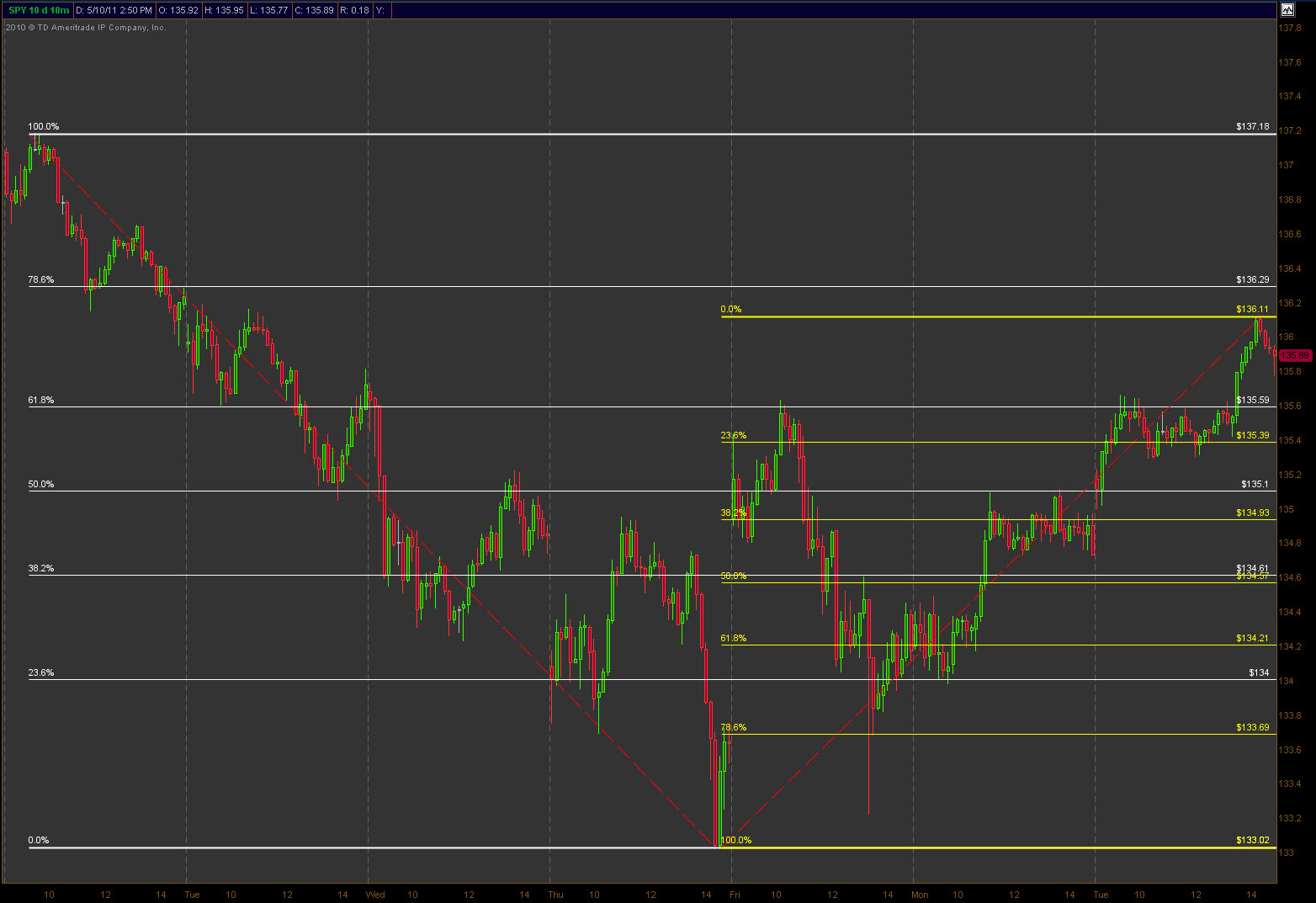I don’t place trades based on Fibinacci levels but I look at them because I know others that I compete with in the market are looking at them and trading off of them. Assuming yesterday’s high was the extent of the bounce, then it’s normal to be looking for a lower low below 133.02 to continue the pattern of lower highs and lower lows. If this assumption plays out then I can watch the Fibonacci levels of the bounce (in yellow) and see what happens at each level.
I’ve seen the mention of cumulative breadth making new highs while the $SPX is lagging on many of the sites/services I read. What’s interesting is that the $SPX typically makes new highs following breadth. However, digging a bit deeper and looking at the time it takes can help in forming an opinion in market direction from here. For example, this same occurrence happened three times last year (3/1, 5/3, 8/2) and every one of those instances did indeed have the $SPX making new highs. Here’s the rub, the days required to do so were 8, 130, and 67 respectively.
Notice that the last two occurrences happened in May and August and took the longest time for the $SPX to make those new highs. Just so happens that both of those dates fall into the time frame of a historically tough time in the market for bulls. I’m not saying that we can’t make new highs here, just sharing some information I’m using to help me be more informed about managing risk.
I’m also aware that economic catalysts have been very light this week and they pick up tomorrow starting with the PPI. One other consideration I have in the back of my mind is that next week is option expiration. Bottom line is that there are lots of ways to monitor and participate in this current market and I’m combining historical tendencies along with price levels to better prepare myself.

